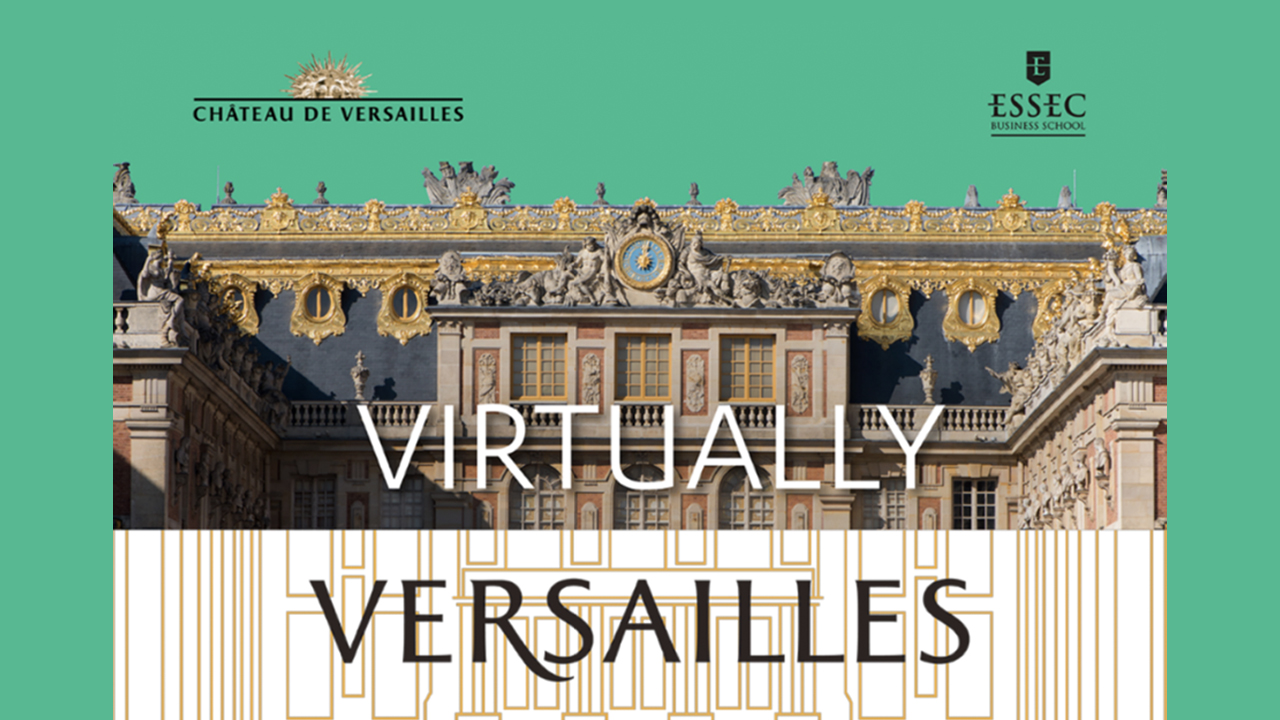The Palace of Versailles may be France’s most iconic architectural feat, but it’s focused on increasing awareness in Asia — a market making up 15 percent of its 10 million annual visitors. “Virtually Versailles” is a vehicle addressing this issue. The immersive exhibition combining panoramic experiences, 3D models, and virtual reality was created alongside Google Arts & Culture and the Orange Foundation and is on a tour of major Asian cities.
Currently on show in Shanghai until late fall, the digital exhibition forms part of Versailles’ multi-pronged engagement with Chinese audiences, one relatively unmatched among France’s cultural attraction industry. For the past five years, the 18th century seat of French royalty has proactively pursued a dynamic China social media strategy through WeChat, Weibo, and most recently Oasis, an Instagram-esque platform developed by Sina Weibo.
Just as Versailles initiated a special program of events to connect with local audiences under lockdown — #VersaillesChezVous (#VersaillesFromHome) — so too it continued prioritizing China. In May, the attraction collaborated with Fliggy, Alibaba’s travel platform, to host a curator-led live stream tour. To date, a video of the tour on Weibo has been watched more than a million times.
As Anna La Fonta, Versailles’ Project Manager, discussed with Jing Culture & Commerce, the digital focus is part of a longer-term strategy centered on reacting to the preferences of Chinese audiences.

Image: Virtually Versailles
How has Versailles maintained connections with Chinese audiences under lockdown?
It’s been important to overcome the issue of distance to maintain a dialogue and digital platforms have given us the means to do so. The Palace of Versailles has used WeChat, Sina Weibo, and Oasis to relay content in Chinese. We’ve led virtual tours of the Estate of Versailles and the Queen’s Hamlet, posted videos on artistic practices, and shared photos.
Even before coronavirus, Versailles’ relationship with Chinese audiences had been changing, could you discuss?
Chinese visitation and habits have been constantly evolving. More and more Chinese visitors are traveling independently rather than as part of a group. Consequently, we’ve developed new partnerships in order to meet their needs more effectively. This starts with adapting to digital platforms which allows us to offer personalized experiences.
As mentioned, you’ve adopted a new digital strategy for China, how has this been developed?
The Palace of Versailles has offered Mandarin information for Chinese tourists for the past 20 years as well as a free audio guide, but we have been working with influential players in China’s digital community to increase online following. In 2015, we set up a WeChat account and this allowed us to communicate directly with Chinese web users for the first time. We’re also on Weibo and the number of views [on articles] is constantly growing and posts are generating increased interaction. In May this year members of the conservation team led a live stream tour of the Palace and its gardens on Alibaba’s Fliggy platform.
What are Versailles next digital steps?
Personalization, we’re developing a WeChat Mini Program which will include an interactive map, audio guide, service information, ticketing, and a selection of spin-off products. This connects with Palace of Versailles facilitating new methods of payment in response to Chinese visitor preferences, they can now pay with WeChat Pay and Alipay.
Versailles became the first international attractions to launch on Oasis, what is the thinking behind this?
Versailles has always been in the vanguard of innovation and Oasis challenges us to develop a new community interested in artistic, cultural, and lifestyle content. It’s a network aimed at young workers and millennials. This is one of our target groups and we will share inspirational photographs to create a visual story of the Palace from past to present. Within a few weeks, we had 210,000 subscribers and we believe the number of highly-engaged followers will grow steadily.
What aspects of Versailles most interest Chinese travelers and how do you reflect this via digital content?
Chinese visitors are primarily interested in the Palace of Versailles’ iconic spaces, but we’re seeing increasing interest in the gardens and our social media is undoubtedly contributing to this surge in curiosity. We focus on offering behind the scenes information, virtual tours, and explaining key moments in the history of the Palace.
What initiatives is Versailles considering in anticipation of travel resuming?
The health crisis has had a big impact on the Palace of Versailles’ international promotional strategy. The exhibition organized in conjunction with the Palace Museum in the Forbidden City, which was scheduled to take place in 2020, has been put back to next spring.
This exhibition focuses on the artistic and diplomatic relations between France and China in the 18th century and will feature the Palace’s latest acquisitions, as well as works that highlight the fascination of the Versailles Court for all things Chinese.



